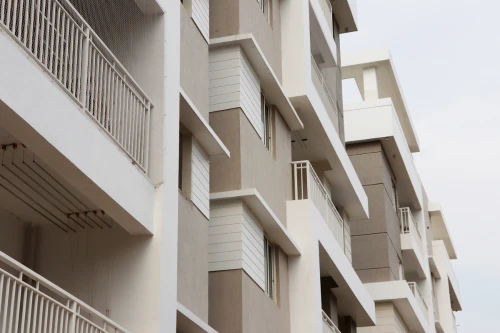
How SB 721 & SB 326 Balcony Inspections Change Insurance Coverage
In California, Senate Bill 721 (SB 721) and Senate Bill 326 (SB 326) represent transformative legislation aimed at reinforcing safety and structural integrity in multi-family and condominium properties. While these laws were enacted in response to tragic incidents, they also provide a crucial compliance pathway to protect building owners and homeowners associations (HOAs) from insurance cancellation, liability exposure, and financial penalties.
Background & Overview of SB 721 and SB 326
The Berkeley Tragedy & Legislative Response
A tragic balcony collapse in Berkeley in June 2015 claimed six lives and injured several others. The collapse was later attributed to dry rot, water damage, and lack of proper structural inspection. That event spurred California lawmakers to act.
- SB721, signed by Governor Brown in 2018, applies to multi-family apartments with three or more units and mandates inspections of “Exterior Elevated Elements” (EEEs) — balconies, stairways, decks, walkways — more than six feet above grade, with wood-based framing
- SB326, signed in August 2019, is directed at HOAs and condominium properties (common interest developments). It requires inspections of EEEs for buildings under HOA governance, also supported by wood, above six-foot height
Timeline & Frequency
- SB 721 initial deadline was Jan 1, 2025, but legislation extended it to Jan 1, 2026, for buildings already inspected between 2016-2019; otherwise inspections are required every 6 years thereafter
- SB -326 also requires an initial inspection by Jan 1, 2026, followed by re-inspection every 9 years. Inspectors must assess a statistically significant random sample (e.g. 95% confidence, ±5%) of the EEEs.
Who Can Perform the Inspections?
- Under SB 721, inspections may be carried out by licensed architects, structural or civil engineers, or certain general contractors (Class A, B, or C-5) with at least 5 years of experience, or certified building inspectors or officialsUnder SB 326, inspections must be done by a licensed architect or engineer. HOAs may need to use a statistician when sampling meets legal thresholds.
Requirements of SB721 & SB326 in Detail
Scope of Inspection
Both bills apply to Exterior Elevated Elements—features that extend beyond the building envelope and include:
- Balconies
- Stairways
- Walkways
- Decks
- Railings
- Associated waterproofing systems
These elements must be more than 6 feet above ground and supported by wood or wood-based materials Inspection Parameters
- Inspect at least 15% of each type of EEE during each cycle under SB 721 and similarly for SB 326 random sampling criteria (95% confidence, ±5%) Use visual assessment and, if necessary, invasive or destructive techniques (e.g., endoscopic camera, moisture sensors, infrared imaging, limited removal of finishes) to evaluate structural integrity and waterproofing .
Reporting & Timelines
- Inspectors must deliver a written report, including:
- Identification and condition of EEEs
- Remaining useful life
- Recommendations for repair
- Identification of immediate hazards requiring action within 15 days.
- Emergency hazards must be reported within 15 days and access must be restricted.
- Repairs must begin within 120 days, with permit filing and completion deadlines outlined; extensions may be permitted locally
Recordkeeping
- Retain inspection and repair records for at least two cycles (12 years under SB 721; 18 years under SB 326).
Consequences of Non-Compliance
Fines & Liens
- Failure to conduct inspections, report hazards, or complete repairs can result in fines of $100 to $500 per day, enforced by local jurisdictions, and possible safety liens on the property.
Legal Liabilities
- Owners may face lawsuits if a collapse or injury occurs on an EEE that lacked proper inspection or repair documentation. This can expose owners and HOAs to major legal claims and punitive damages.
Insurance Risks
- Insurance carriers often require proof of compliance as a condition for coverage. In other words, failure to comply can lead to cancellation of insurance, denial of claims, or inability to procure new coverage until inspections and repairs are documented.
Moreover, carriers may reduce coverage limits or raise premiums for properties without proof of code compliance or regular maintenance.
How Compliance Protects Your Insurance
Demonstrates Due Diligence
Keeping inspections current shows insurers that you are actively managing structural health—not waiting for things to break. This proactive risk management boosts confidence and reduces insurer risk perception.
Avoids Policy Triggered Exclusions
Many commercial property and liability policies exclude coverage for claims arising from neglect or failure to adhere to local codes or statutes. If an incident happens and you cannot show SB 721 or SB 326 compliance, insurers may deny a claim based on these exclusions.
Prevents Cancellation & Non-Renewal
Insurance companies routinely audit high-risk portfolios. Properties lacking evidence of inspections and repairs may be flagged. Continued non-compliance could lead to policy cancellation or refusal to renew.
Maintains Marketability and Underwriting Eligibility
Compliant documentation helps when shopping for coverage; underwriters favor policies from buildings with documented inspection cycles and timely repairs. Compliance can also affect eligibility for premium credits or discounts.
Step-by-Step Compliance Strategy to Preserve Insurance
Step 1: Determine Applicability
- Is your property an apartment building with 3+ units? Check out com balcony exemption Survey to see the result.
- Is it a condominium HOA or common interest development? → SB 326 applies.
Step 2: Engage Qualified Professionals
- Under SB 721: hire an architect, structural engineer, or licensed GC (A, B, C-5) with ≥5 years experience, or certified building inspector.
- Under SB 326: hire a licensed architect or structural engineer.
Ensure independence: SB 721 originally barred inspectors from performing repairs—but later amendments (e.g. SB 607) may allow it, though conflict of interest is still discouraged
Step 3: Plan the Inspection Timeline
- For existing buildings, ensure initial inspection is completed before Jan 1, 2026.
- Schedule recurring inspections every 6 years (SB 721) or 9 years (SB 326).
Step 4: Conduct and Document Inspection
- Inspect at least 15% (SB 721) or statistically significant sample (SB 326) of EEEs.
- Use visual and supplementary techniques as needed.
- Receive a full inspection report that includes:
- Condition assessment
- Remaining useful life estimate
- Safety hazards
- Repair recommendations
- Immediate hazards must be flagged within 15 days.
Step 5: Execute Repairs
- Emergency repairs: take immediate action, restrict access, notify authorities.
- Non-emergency: start within 120 days, secure permits, complete work. Extensions possible via local jurisdiction if justified.
Step 6: Maintain Records
- Keep inspection and repair documentation for 12 years (SB 721) or 18 years (SB 326).
- Make reports available to insurance carriers, authorities, potential buyers, or residents.
Step 7: Show Compliance to Insurers
- When renewing or applying for insurance, proactively submit documentation showing:
- Completed inspections and dates
- Repair scopes, contractor invoices, permit history
- Internal records confirming follow-up
- Ask your agent or broker to note “code compliance” or SB 721/SB 326 compliance in underwriting file.
Additional Benefits Beyond Insurance
Tenant Safety & Liability Reduction
Regular inspections protect tenants by catching deterioration early and preventing structural failure. That not only reduces risk of injury but also strengthens a property owner’s legal defense by showing proactive maintenance.
Property Value Preservation
Buildings in compliance maintain structural integrity longer, which supports property values. Prospective buyers or investors will pay more for well-maintained, code-compliant buildings.
Reduced Financial Risk
Avoiding fines, fees, and liens helps preserve capital. Repair planning through documented inspections enables better budgeting and avoids emergency costs.
Regulatory Good Standing
You also avoid citations from local jurisdictions and the reputational harm of non-compliance.
Climbing premiums? Afraid your carrier might drop you altogether? In today’s California market, the condition of your balconies and other Exterior Elevated Elements (EEEs) is one of the first things underwriters scrutinize. Senate Bills 721 and SB326 turned routine inspections into hard-and-fast law—and insurers are treating non-compliance as a flashing red light. Ignore it, and you may lose coverage or pay sky-high surplus-lines rates.
Below is a practical rundown of why balcony inspections now sit at the heart of property insurance decisions—and how staying compliant can help you protect coverage, curb premium hikes, and safeguard your buildings.
Why Balconies Became a Deal-Breaker
The 2015 Berkeley balcony collapse (six deaths, seven critical injuries) exposed hidden dry rot no one saw coming. Lawmakers responded with SB 721 (for rentals) and SB 326 (for condo HOAs) to force proactive inspections of balconies, decks, catwalks, and exterior stairs. When your balconies fail, insurers pick up the tab—so they now demand proof you’ve followed the law.
Quick Recap: What Each Bill Requires
|
Bill |
Who’s Covered |
First Inspection Due |
Re-Inspection Cadence |
|
Multi-family rentals, 3+ units |
Jan 1 2026 (unless inspected ≤3 yrs before 1/1/19) |
Every 6 years |
|
|
Condo HOAs, 3+ units |
Jan 1 2025 (existing) or within 6 years of C of O (new builds) |
Every 9 years |
Both laws demand a licensed architect or engineer (SB 721 allows certain veteran contractors) and written reports filed with the owner (and city if hazards exist).
Insurance Impact: Four Ways Compliance Saves You
- Lower Risk Profile
A current inspection report tells underwriters you take life-safety seriously—making you a better bet. - Liability Shield
If a deck collapses and injures tenants, compliant owners can show they met code—crucial in court and claim negotiations. - Policy Continuity
Non-compliant properties face non-renewals, mid-term cancellations, or forced-placement into expensive surplus-lines markets. - Premium Control
While an inspection alone won’t guarantee a discount, it prevents the rate surcharges insurers tack onto high-risk, out-of-compliance properties.
The Hidden Price of Skipping Inspections
- Daily Fines: Up to $500/day after a 30-day grace period under SB 721.
- Lawsuits & Settlements: Injury claims can blow past policy limits—especially if the carrier cancels for non-compliance.
- Complete Loss of Coverage: Without insurance, one structural claim can wipe out your building’s equity.
Six Steps to Stay Insurable
- Confirm Your Law: Know whether SB 721 (rental) or SB 326 (HOA) governs your building.
- Book Early: Don’t bank on January 2025—inspection calendars are filling fast statewide.
- Hire Licensed Pros: Architect, engineer, or qualified contractor (SB 721 only).
- Fix Fast: Emergency defects? Barricade and repair immediately. Non-urgent? Permit in 120 days, repair in another 120.
- Keep Digital Records: Retain reports, permits, and repair receipts (SB 326 demands 18-year retention).
- Loop in Your Carrier: Proactively share compliance docs—it builds trust and can stave off premium spikes.
Turn Compliance into a Strategic Advantage with DrBalcony
- Inspection-Only, No Upsell: Objective, engineer-backed reports insurers respect.
- AI-Enhanced Diagnostics: Detect hidden rot before it becomes a claim.
- 20 % Price-Beat Guarantee and statewide rapid scheduling.
- Free Compliance Toolkit for every new client—checklists, budget templates, tenant notices, HOA resolutions.
🔍 Book your inspection today at DrBalcony.com or call 805-312-8508.
Secure coverage, avoid fines, and protect every resident—starting now.

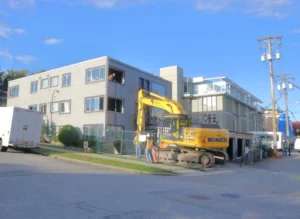

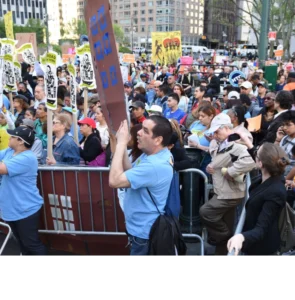


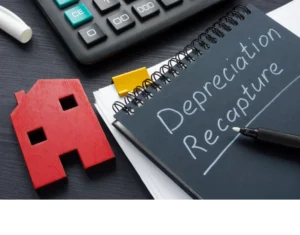

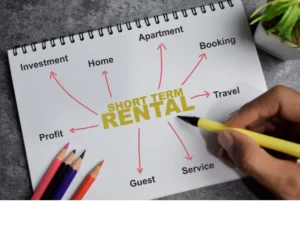




 Accessibility
Accessibility